Relative Strength
"Ride the winners and cut the losses". So goes the old adage.
As a serious investor in silver and gold shares I did a little exercise this morning that I thought was sufficiently interesting to share here.
"Relative strength" may be quantitatively calculated by dividing the price of investment item A by that of item B. If a chart of the resulting ratio is in a bull trend then A is a relatively better investment that B and vice versa. Sometimes, an opportunity manifests when a previously entrenched trend changes.
I like Point and Figure representations of Relative Strength because P&F cuts through the "noise" of day-to-day trading, and only shows swings of movements that are significant.
I looked at the RS charts of SSRI, HL, PAAS and SIL and here's what I found: (Courtesy Sharpcharts.com)
- Silver Standard Resources has arguably been the best performer, followed by Hecla Mining, Pan American Silver and Apex Mining.
- All except APEX seem to be hugging their uptrend lines - which could either mean a possible break DOWN if the Primary Trend is about to reverse, or a break UP if the Primary Trend is about to resume. (not very helpful)
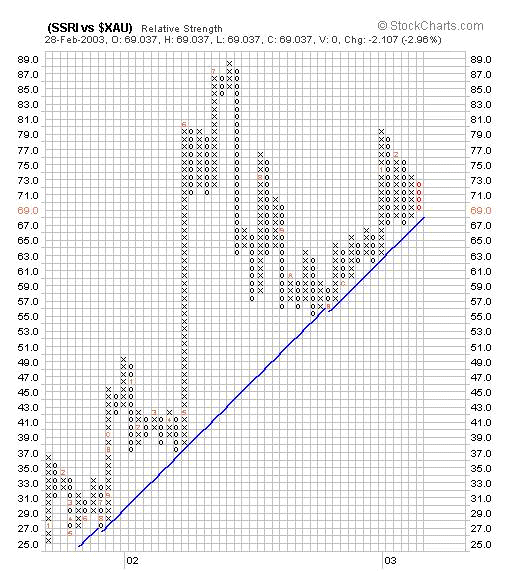
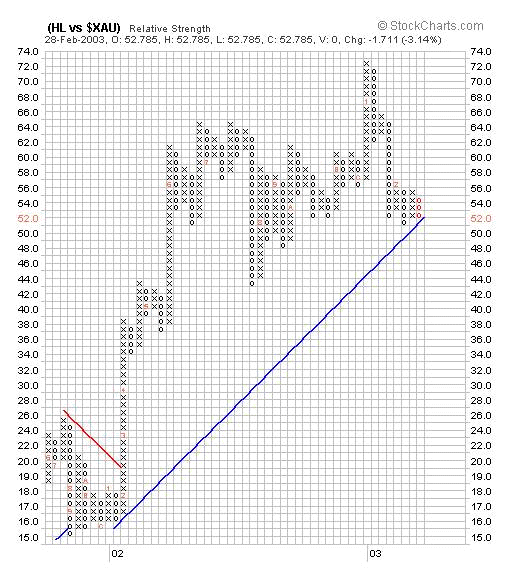
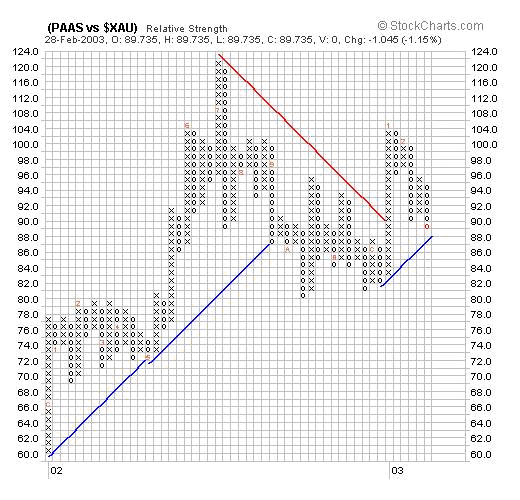
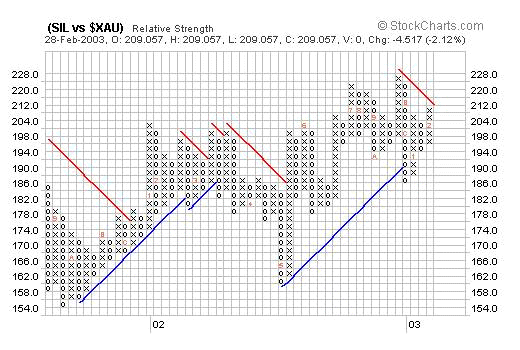
When we look at the same four charts in absolute (as opposed to relative strength) terms, we see the following:
1. The "Buy Signal" on SSRI's chart is still intact:
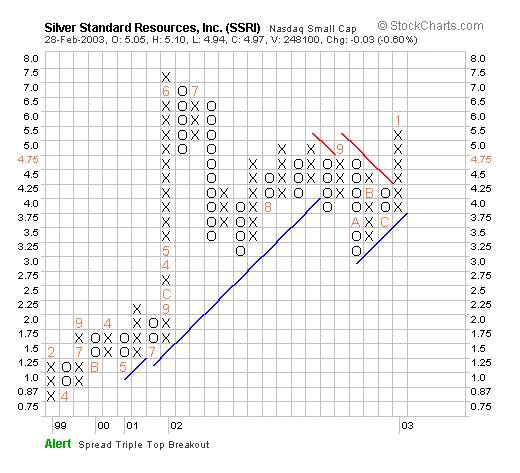
2. Hecla's chart is flashing a warning of a possible trend reversal
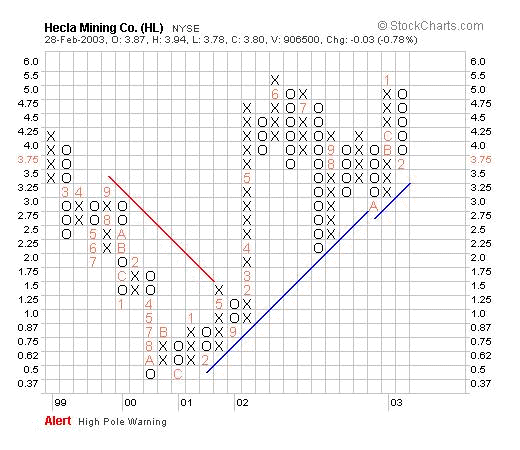
3. Pan American's chart is still showing strength, with some consolidation occurring
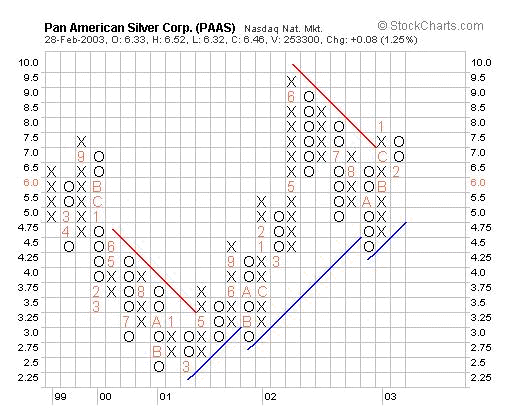
4. APEX Mining's chart is showing a sell signal
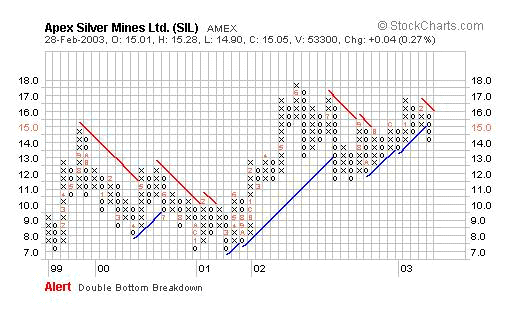
This last fact was of great interest because it represents a logical disconnect. Yes, SIL's chart has had the weakest strength relative to the XAU, but its RECENT strength relative to the $XAU has been GREATER than that of the other three - and yet its price chart is showing a full blown "sell" signal.
So the question I asked myself was: "Could this be a warning of a possible trend reversal in the $XAU" (I talk a lot to myself nowadays. Its what happens when your views have drifted away from the group's views and could either be a signal of impending insanity, or a signal that something in the environment is off centre - so I turn especially vigilant when this happens)
When a "sector" trend reversal occurs, what tends to happen is that the previous over-performers become under-performers (they over-perform on the downside), and the previous under-performers become over-performers (they under-perform on the downside).
So I had a look at Newmont's relative strength chart and guess what? It is showing a very minor "buy" signal:
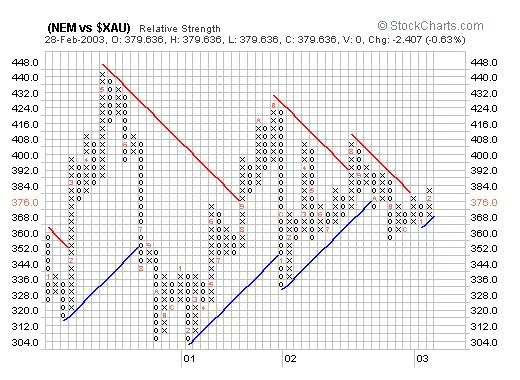
Note how its "relative" price has broken up from a double top. This is important in that Newmont has been a relative under-performer as compared with (say) Harmony or Durban Roodepoort Deep
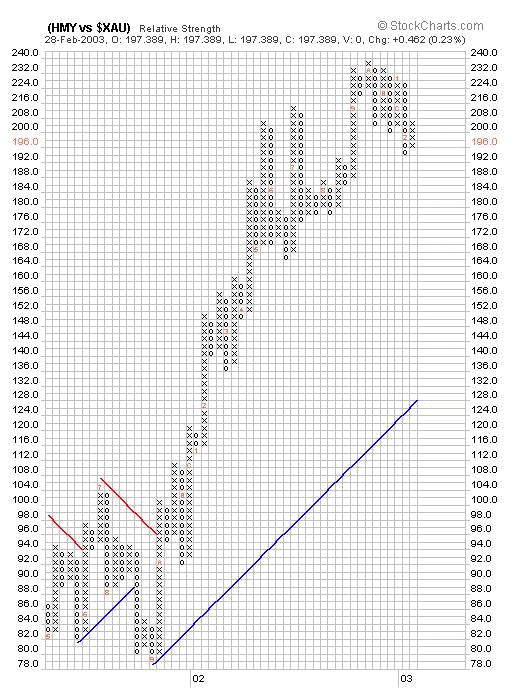
Notice how far away HMY's chart is from its trendline, and how far DROOY is from its trendline. This tells me that if the Primary (or Secondary) Trend of the $XAU should change, shareholders in both Harmony and DROOY will be at significant risk.
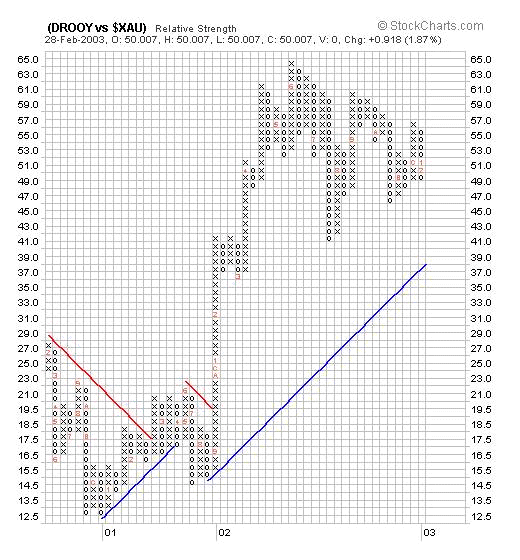
So, will the Primary (or Secondary) Trend change?
Let's have a look at the $XAU relative to the Gold Price itself:
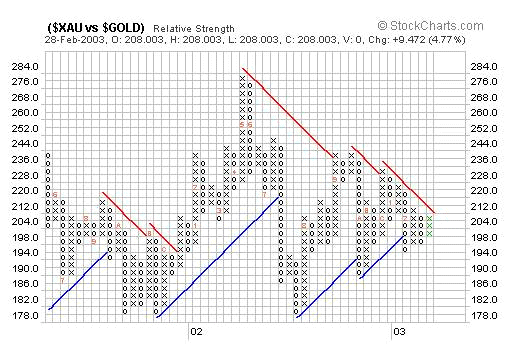
Note how it has been strengthening relative to gold in the very recent past within the context of a Bear Trend that is still intact (it has been well documented that the $XAU has been under-performing relative to gold in the recent past)
Gold itself has been consolidating, and its chart shows no sign of a break down in the Primary Trend, although the current consolidation could conceptually see its price coming all the way back to around $325
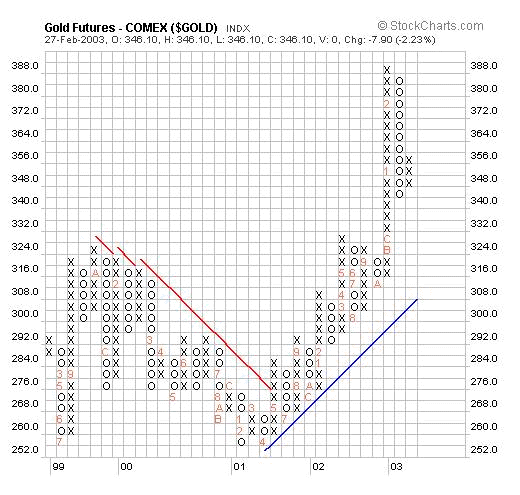
So what's the bottom line of all of this? Why do I hear these voices in my head? Is there a trend change coming in the $XAU?
These are the facts:
- The Gold Price is not showing strength at present, and $XAU/$Gold chart is essentially trend-less. To me this suggests further consolidation for the foreseeable future (as opposed to a trend change)
- The "darlings" of the market - those that have significantly outperformed the $XAU in the recent past - appear to be out on a limb, and these counters may experience some volatility on the downside as the riverboat gamblers lose patience or have their margins called.
- The relative under-performers (less volatile shares) are starting to strengthen in relative terms. (Confirming that we are unlikely to see a resumption of the Primary Bull Trend in the gold price for some time, and that there may even be further pullbacks in the sector).
Conclusions
I am going to stick with the views expressed in my previous article.
The chart evidence appears to confirm that the market is already looking past Iraq, and is not particularly afraid of what it sees.
The upcoming 2004 elections are dictating the need for a "positive political spin", and this implies that the Industrial Equities will "need" to experience some sort of Indian Summer. This also implies that the "fear factor" that is built into gold will start to recede, and that $400/oz will represent a technical "cap" on the gold price for some time into the future.
In turn, this implies, there will be some downside volatility in the speculative gold (and silver) shares.
The only disconnect that I have (which leaves open the possibility that the voices in my head are of medical consequence) is that the Bond Yields are performing out of synch with these views. There is no doubt in my mind that the USA is heading for a period of domestic price inflation following the double whammy impact of a falling dollar (rising imported prices) and inflationary Fed activity (printing presses rolling).
Could we be heading back into a period of "strong dollar"? How could this be possible? Damned if I can work that one out. The falling yields are worrying me. I have to admit. They are not confirming my views, and I guess I'll just have to live with the voices in my head for a while.
Bottom Line
Whilst Gold and Silver remain in their Primary Bull Trends, I will continue to hold on tightly to my gold and silver shares - which were chosen because of their underlying fundamental quality and their long life expectancies. In the end analysis, "truth" conquers all. And the truth is that the demand for both gold and silver exceeds the supply of these two metals; and monthly price charts are confirming this truth. I'm in no particular hurry (although, admittedly, the Relative Strength chart of my age relative to that my kids is in a Primary Bear Trend.)
















